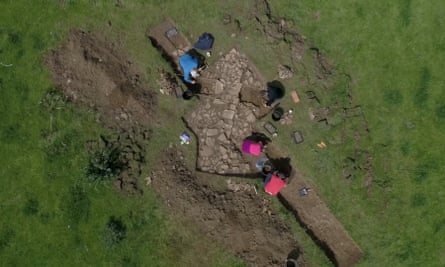When a group of amateur archaeologists set out to find the buried remains of a Tudor palace in their Northamptonshire village five years ago, they knew the odds were against them.
“Many of us were brought up in the village, and you hear about this lost palace, and wonder whether it’s a myth or real. So we just wanted to find it,” said Chris Close, the chair of the Collyweston Historical and Preservation Society (Chaps) which made the discovery of the Palace of Collyweston in a back garden this year.
“But we’re a bunch of amateurs. We had no money, no expertise, no plans, no artist impressions to go off, and nothing remaining of the palace. It’s naivety and just hard work that has led us to it.”

Various attempts had been made in the 1980s and 90s to find Collyweston Palace, the home of Henry VII’s mother, Lady Margaret Beaufort, but without the advantage of modern technology none had succeeded.
The palace was famous during the 15th century and a number of historic events took place there. The pre-wedding celebrations of Margaret Tudor to James IV of Scotland in 1503 took place in the palace, and Henry VIII is recorded as holding court there on 16 and 17 October 1541.
By the mid-17th century it had fallen into disrepair, and until the Chaps dig uncovered the palace walls in March, there was very little remaining evidence of its existence.
“A number of things have only really come to light as we’ve done this project,” said Close. “As you do more and more research, and various different records start to become unearthed, we realised Collyweston had privy councils being run from here, which is of massive national importance.”

Historians from the University of York helped verify the group’s findings and identify the palace through some uncovered stone mouldings, and will work with Chaps on more excavations to further reveal the structure and conserve it for the future.
The Chaps team, which comprises more than 80 members ranging from teenagers to people in their 70s and 80s, first set out their plan to find the palace in March 2018, using “local folktales and hearsay” to help refine their search area.
They carried out geophysical surveys, and used ground-penetrating radar (GPR) to help reveal the location of the palace walls, before securing permission from homeowners to excavate in gardens.
“We’ve done it all on an absolute shoestring,” said Close. “We’ve basically done an £80,000-£90,000 project for roughly £13,000. For us, being a little society, to have achieved this with no money, or expertise, or plans, I think it’s something that the whole society should be proud of.”





